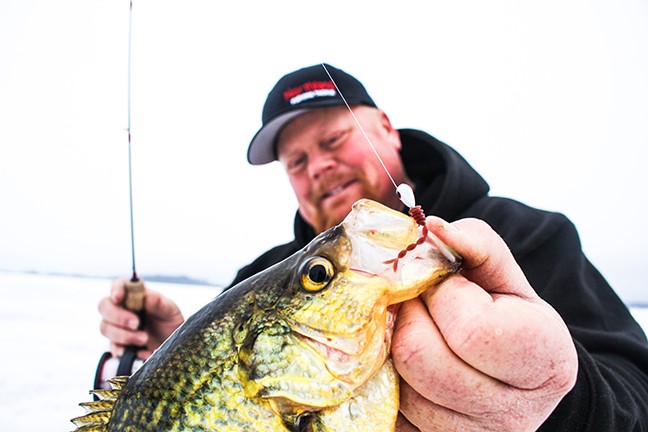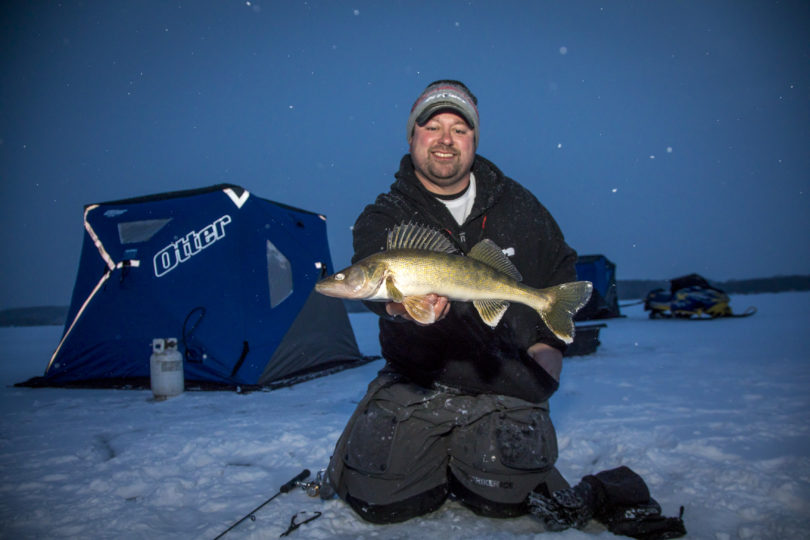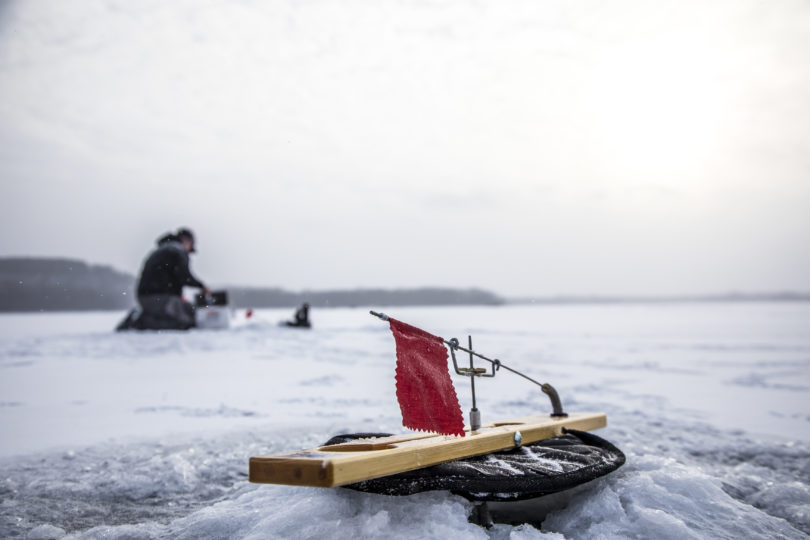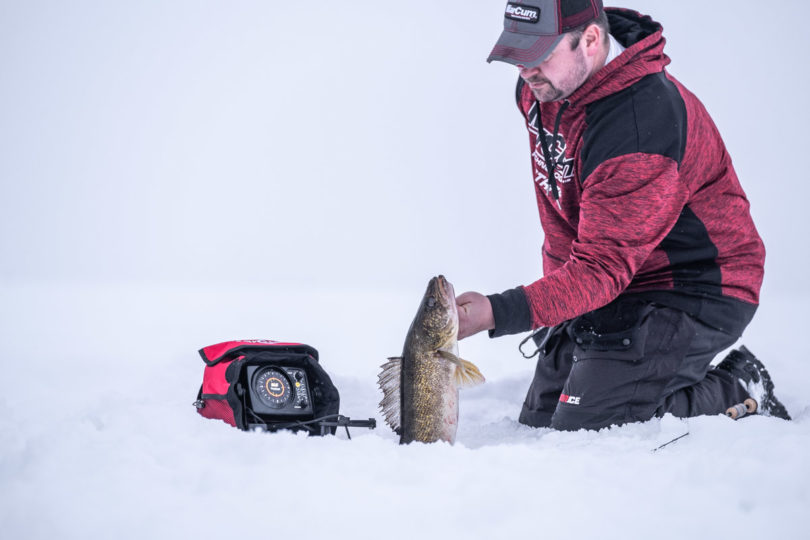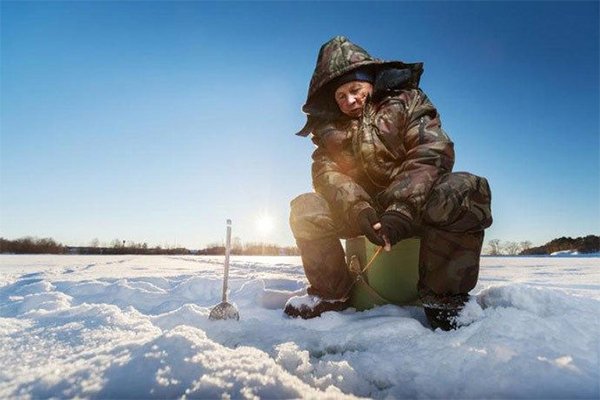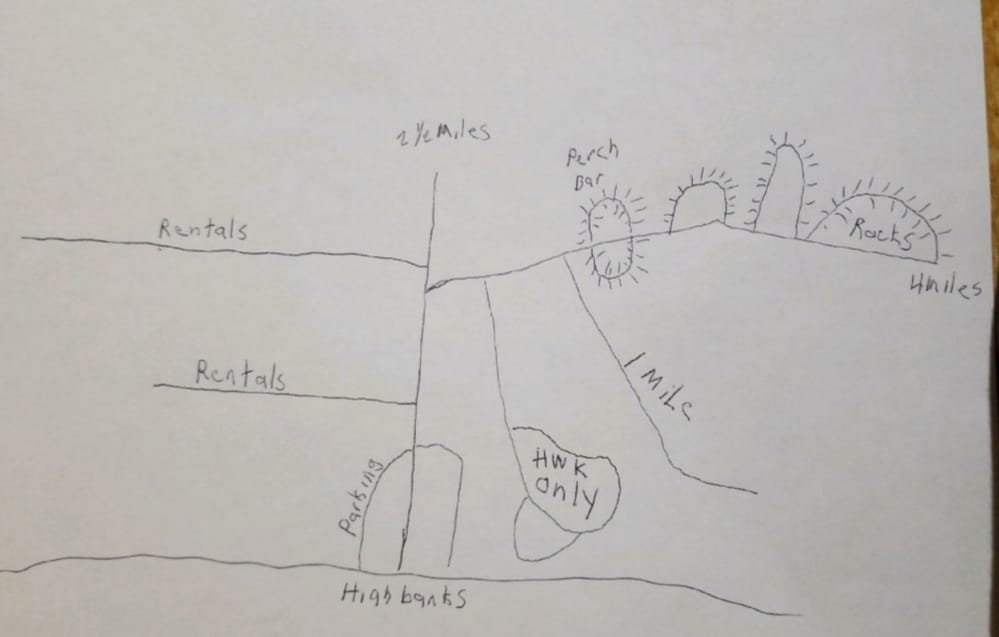TOP ICE BAITS FOR WINTER PANFISH
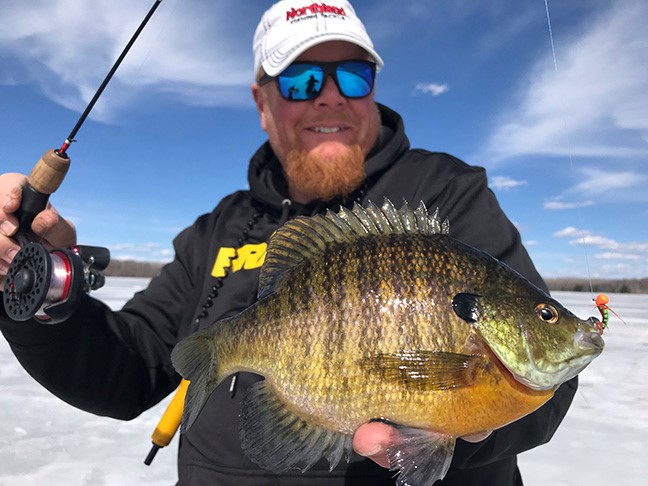
|
Northland Fishing Tackle® pro Brian “Bro” Brosdahl shares tackle tips to catch more panfish.
|
|
BEMIDJI, Minn. (December 8, 2020) – Anglers are starting to hit the ice with a bullseye on big bull bluegills, slab crappies and jumbo perch. To help you succeed, we talked with Northland pro Brian “Bro” Brosdahl about his top five panfish baits.
“Putting together a comprehensive panfish box with lots of options is critical,” says Bro. “You want some jigs with a fast rate of fall. Tungsten gets down and delivers bait in deeper water or situations where you’re in a hurry to get in front of the fish’s face. You also want traditional lead lures. Lead is easier to form, so you’ve got some cool shapes and slower fall rates. You also want minnow baits to round out the panfish collection.”
The first bait Bro makes sure is in his box is Northland’s Tungsten Punch™ Fly.
|
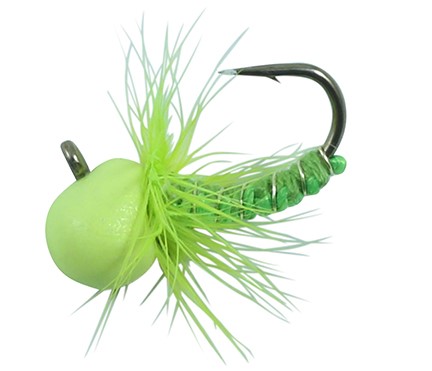
1. Punch Fly
The Tungsten Punch™ Fly is a buggy version of the Tungsten Punch™ Jig, yet offers many of the same benefits as its brother. With an increased weight-to-size ratio and rapid fall rate that’s 20% faster than traditional tungsten, this bait fishes fast and gets eaten faster. Invertebrates and suspended zooplankton are the preferred prey of many panfish species, and this jig stands out…but while fitting in. The lifelike larva hackle is a caddis and mayfly impostor, while an undulating soft hackle at the head of the jig mimics a breathing and swimming insect. A faster fall rate means quick-to-the-fish, getting a smaller jig deeper. Once a big bull or massive crappie eyes the Tungsten Punch™ Fly, simply kill or quiver it for a lifelike breathing hackle action. A premium wide-gap hook ensures quick hookups, too. The generously sized hook also provides ample room for rigging plastics or slathering with wax worms or maggots.
-
Tungsten bead head
-
Falls 20% faster than other tungsten bead heads
-
Wide gap hook for ultimate hooking percentage
-
Soft and chewy hackle wrap
“The Tungsten Punch Fly is a great lure for targeting big bluegills, jumbo perch and crappies because it resembles insect larvae coming out of the mud. It has lifelike hackles that resemble the cilia of insect life, and like its name says, it punches through slush and gets down fast. The Tungsten Punch Fly has a unique strong hook that buries itself in the roof of the fish’s mouth. There are match-the-hatch colors, and you can even add a maggot or a waxworm for added flavoring,” comments Bro.
Bro likes to drop it in and slowly jig all the way to the bottom. In ten feet of water, he’ll stop about five feet down and slowly work it to the bottom. “If the fish are aggressive, I’ll drop it fast on ‘em. But if they’re holding to the bottom and don’t come up to greet it as it’s dropping, then I’ll pound the bottom stirring up mud and that usually gets them going. Slow twitches are key. It’s imitating an insect. Subtle and long pauses work best. Read the behavior of the fish with your jig strokes. You can even add a minnow under a deadstick. Even for lethargic big bluegills, just slowly raising it and dropping it is the kicker. And holding the bait above them so it silhouettes can be key.”
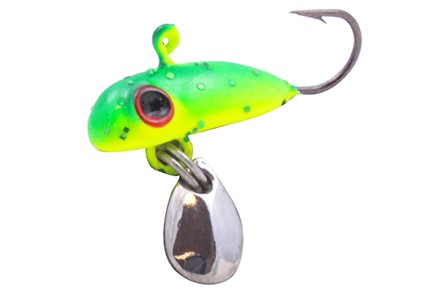
-
Bro Bling Jig
Designed by Bro and the Northland staff, Bro’s Bling Jig is built for jumbo panfish. Fish it with a mix of glides, pauses, shimmies and darting movements. Choose a variety of tippings, including scented softbaits like the IMPULSE® Water Flea and Skeleton Minnow, or any waxy-like live bait.
-
Over-sized bug eyes and realistic larvae body shape
-
Flash attracting blades alert fish to eat
-
Flat belly provokes swimming and darting action when jigged
“The Bro Bling Jig is a wide-bodied bait that falls fast, has a flat bottom so it scoots forward, a sticky-sharp hook, and comes in match-the-hatch colors. It also has a flicker blade—not a spinner blade because there’s no swivel—to flash the fish in. When fish get close, they smell the waxy or minnow and eat it. The Bro Bling Jig is great for getting down to the fish fast with a forward moving action due to its shape. I always like to say that the Bro Bling Jig blings them in! In ice fishing, we’re not casting out and reeling in to have a spinner spin. In ice fishing you want the refraction of light, you want flash, you want noise. And having a spinner hanging down looks like a fin. From a distance it really rings the dinner bell,” remarks Bro.

-
Forage Minnow® Jig
The renowned Forage Minnow® Jig flashes and flutters up strikes from jumbo panfish. It produces an incredibly tempting minnow action with a variety of jig strokes when tipped with a minnow head or other live bait. It’s also equally effective deadsticking with a lightly hooked live minnow.
-
The country’s hottest minnow imitating jigging lure
-
Features a highly reflective “Holographic” Baitfish-Image® design that imitates game fishes’ most desired forage
-
Holographic 3-D eyes make this the most realistic looking minnow jig on the market
“The Forage Minnow Jig is cool because it is a lifelike copy of a real swimming shiner, fathead, little baby bluegill or crappie. With a jig-style hook, it’s great for tipping with waxworms, maggots, a minnow head or full minnow. You can use it on a deadstick, set-line, tip-up or cork line. You can also just jig it. Plus, when you jig it, the Forage Minnow Jig kicks, which draws fish in. For big panfish, it’s a deadly choice. It has quite a following with slab crappie catchers,” says Bro.

-
Forage Minnow® Fry
The Forage Minnow® Fry mimics a juvenile panfish to tempt perch, sunfish and crappies. The flat body generates an erratic action when vertically jigged, while the extended hook shank is ideal for tipping with soft plastics such as the IMPULSE Zoo Plankton, which will be available soon.
-
Features a lifelike “holographic” Baitfish-Image® body
-
Flashes & flutters to imitate gamefishes’ most desired forage; a “young-of-the-year” minnow fry
-
Deadly on Perch, Sunfish, Crappie, Walleye & Trout
Bro comments, “In the world of ice fishing jigs, the Forage Minnow Fry is incredibly lifelike. It has a little bigger hook and is great for using a crappie minnow, a small fathead, or a couple wax worms. It looks like a swimming bluegill, shiner or crappie minnow. The Forage Minnow Fry matches-the-hatch and is deadly on big panfish. It features a holographic Baitfish-Image body, which is a tried and true pattern. It’s pretty much a no-brainer and a go-getter for big bluegills, crappies and perch.”
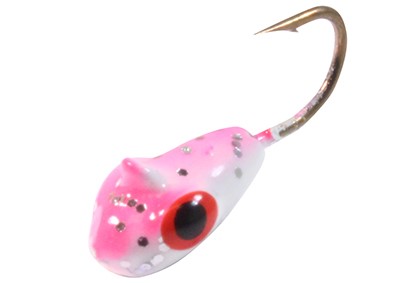
-
Gill-Getter Jig
Don’t let the name fool you, the Gill-Getter® not only racks up big bluegills, but all other kinds of panfish as well. Its realistic SlabBelly® bug-shaped body responds well to rod twitches by darting, juking and spiraling like terrified prey. Tip with an IMPULSE® soft plastic or live bait.
-
Features a realistic “flat-belly” bug body
-
Bulging bug eyes & fish-scale glitter
-
For best results, tip with live bait or soft plastic tail
Bro always carries an ample supply of Gill-Getter Jigs. Bro comments, “The Gill-Getter is one of my all-time favorite ice jigs because it has a flat bottom, bulging eyes, mandible jaw and it’s tear-dropped shaped with a flatter taper like an invertebrate, tadpole, or emerging frog. Fish recognize the shape. It scoots as you jig it and drops down nose first. And the Gill-Getter has a see-saw fall to it. Add waxies, maggots, or a minnow for extra attraction. You’ve got match-the-hatch colors and a sticky sharp hook. It’s just a good all-around bait wherever you fish.”
Parting Words
As you’re assembling your panfish ice tackle boxes, take Bro’s recommendations to heart. When it comes to panfish experts, Bro has more time and experience on the ice than just about anyone and is happy to share what works for him. Whether you’re chasing big bull bluegills, slab crappies, or jumbo perch, we’re certain Bro’s top baits will produce for you!
